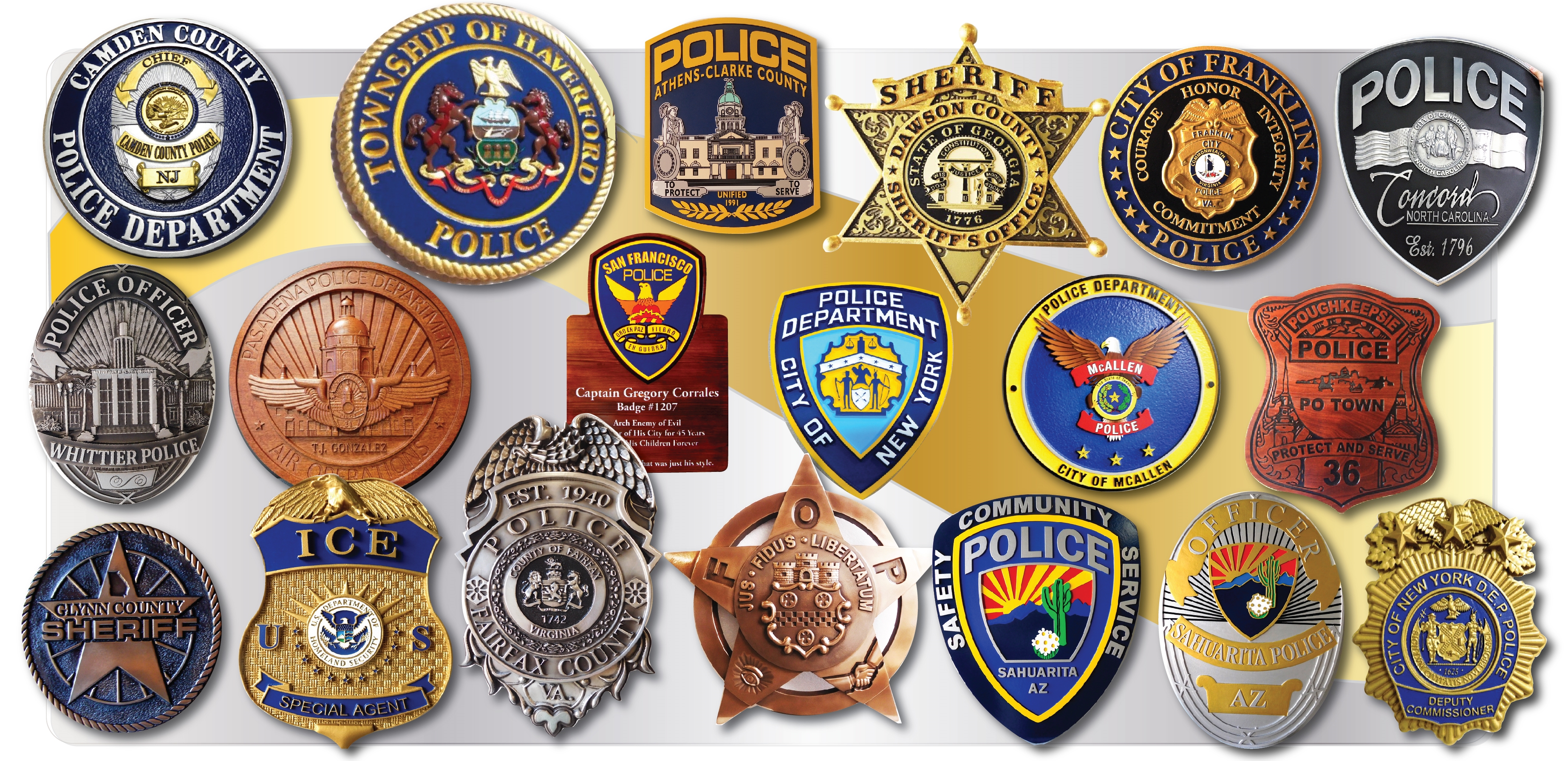Law enforcement badges hold a special place in our society as iconic symbols of authority, bravery, and dedication to upholding the law. These badges come in a myriad of shapes, each carefully chosen and designed to convey specific meanings and represent the identity of the department it belongs to. Let’s delve into the world of law enforcement badge shapes, the reasons behind their selection, the symbolism they carry, and the intricacies of their designs.
The Significance of Shape Selection: Law enforcement badges exhibit a diverse range of shapes, deviating from a standard form like a circle or an oval. This departure from uniformity is rooted in tradition and the desire to establish a unique identity for each department. Different law enforcement agencies, such as police departments, sheriff’s offices, state troopers, and federal agencies, often opt for distinct badge shapes to set themselves apart from one another visually.
The Symbolism of Badge Shapes:
Each badge shape holds a specific symbolism that reflects the values and history of the department it represents:
- Circular badges: Often seen in traditional police departments, circular badges represent continuity, unity, and the unending commitment of law enforcement officers to protect and serve their communities.
- Shield-shaped badges: Commonly associated with sheriff’s offices, shield-shaped badges convey protection, defense, and a profound sense of duty towards the community they serve.
- Star-shaped badges: Traditionally used by state troopers or highway patrol officers, star-shaped badges hark back to the historical significance of stars in the American West, symbolizing law enforcement’s role in maintaining order across vast territories.
- Custom shapes: Some departments opt for custom badge shapes to further emphasize their unique identity or to commemorate historical events specific to their region. These custom designs might incorporate iconic local buildings, landmarks, or symbols representing the region’s history or cultural heritage.
The Sheriff’s Star-Shaped Badge:
Of particular historical significance is the star-shaped badge, which has become an iconic symbol associated with sheriffs and their offices. The tradition of using star-shaped badges for sheriffs dates back to the 19th century in the American West. During this time, law enforcement officers, including sheriffs, played significant roles in maintaining law and order in frontier towns and territories. The star shape is believed to have originated from the symbolic importance of stars during this era.
Symbolism of the Sheriff’s Star Badge:
The star is a powerful and recognizable symbol representing various virtues and values:
- Authority: The star is often associated with authority and leadership, signifying the sheriff’s role as the highest-ranking law enforcement officer in the county.
- Guidance: Just as stars guided travelers during the night, the sheriff was seen as a guiding force in the community, ensuring safety and protection.
- Bravery: The star also symbolizes bravery and courage, characteristics expected of law enforcement officers, especially in challenging and dangerous situations.
- Heroism: The sheriff, as a central figure in law enforcement, is often seen as a hero who upholds justice and protects the community.
Design Considerations:
Designing a law enforcement badge is a meticulous process that involves thoughtful consideration of various elements:
- Colors: Badge colors are often chosen based on the department’s official colors or to represent specific qualities such as valor, justice, or loyalty.
- Emblems: Many badges feature emblems that represent the department’s mission, such as a scale to symbolize justice or a torch to signify enlightenment.
- Inscriptions: Some badges include mottos, department names, or the officer’s rank to add significance to the design.
- Symbols: Law enforcement badges may incorporate symbols of authority, like eagles, stars, or laurel wreaths.
- Engravings: Fine details are often engraved into the badge to enhance its appearance and make it unique.The Center Area:
The central area of a law enforcement badge is especially important as it often holds the most significant symbols and emblems. For sheriff’s badges, this area prominently displays the star-shaped emblem, reflecting the historical and symbolic importance of this design.
In conclusion, law enforcement badges come in a rich variety of shapes, each carrying its own symbolism and history. The selection of a specific badge shape is a deliberate choice made by departments to establish their unique identity and to represent their values and missions. The sheriff’s star-shaped badge stands as a tribute to historical significance and represents the authority, guidance, bravery, and heroism expected of those who uphold the law. Through meticulous design considerations, these badges become powerful symbols that not only represent authority but also embody the dedication and commitment of law enforcement officers to protect and serve their communities.


















